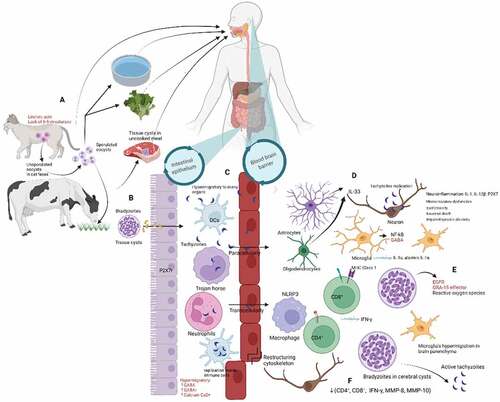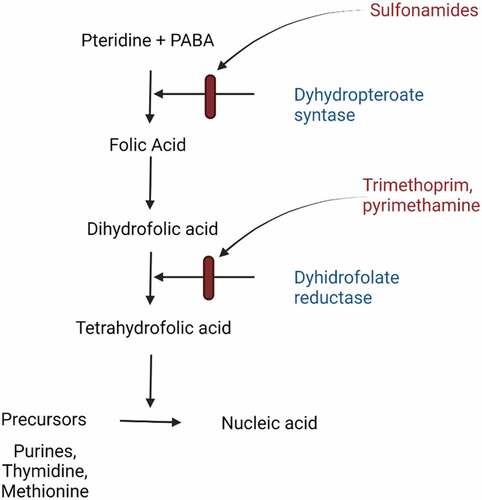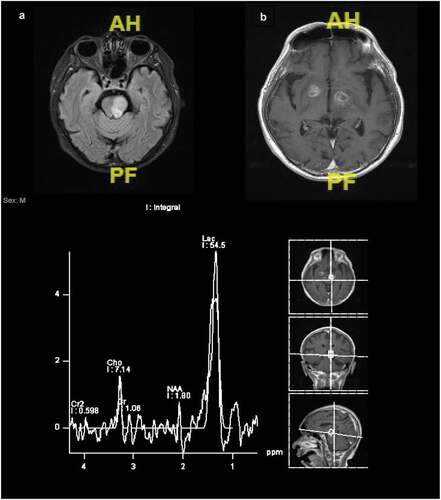Figures & data
Figure 1. Summary of the pathogenesis of cerebral toxoplasmosis. (A) Infection in humans occurs via consuming food or water contaminated with oocyst excreted in cat feces or bradyzoites-containing cysts in raw or poorly cooked meat. (B) Maturation of oocyst in the open air makes it infectious and ready to penetrate the host’s epithelium of the intestine. (C) The tachyzoites are replicated inside the dendritic cells (DCs) and can transverse to the blood-brain barrier. Blood-cerebrospinal fluid barrier through a mechanism that enables the invasion of and migration through cerebral vascular endothelial cells (paracellularly and transcellular) or are carried into the CNS by infected peripheral innate immune cells, i.e. dendritic cells (A trojan mechanism) that dependent to the increase of CCR7r, GABA, GABA-Ar, Ca2+ channel. (D) In the CNS, tachyzoites replication occur inside the neuron and antigen recognition and internalization by microglia, neurons, and astrocytes occurs – and stimulates the release of proinflammatory cytokines and chemokines and other immune mediators that contribute to immune responses and parasite control. (E) T. gondii stimulates the production of GABA, EGFR, GRA-15 effector, P2X7, and ROS to suppress the host’s immune mechanism and facilitate rapid parasite transfer between cells in the brain parenchyma. (F) Reactivation of bradyzoites in cerebral cysts induced by decrease of CD4+ and CD8 + T cells, IFN- γ, MMP-8, or MMP10.

Figure 2. Summary of folic acid pathway. Folate contained in natural food or folic acid as a synthetic form in supplements is a critical substance in the metabolism of nucleic acid precursors and several amino acids. P-aminobenzoic acid (PABA) is a cofactor of enzymes dihydropteroate synthase needed to synthesize folic acid. Sulfonamides act as a competitor of PABA, which prevents the synthesis of dihydrofolic acid. In combination with sulfamethoxazole, Trimethoprim is a structural analog to dihydrofolic acid, which competitively inhibits the conversion of the dihydrofolic acid to tetrahydrofolic acid. Eventually, the DNA synthesis will be interrupted.

Figure 3. Magnetic resonance spectroscopy of patient with cerebral toxoplasmosis. (A) Lesion at left midbrain and pons. (B) Multiple cortical and subcortical ring enhanced lesions at frontoparietalis dextra, bilateral basal ganglia, right amygdala, and left cerebellum causing midline shift 0.45 cm to the left. There is an increment of lactate peak 54.5 intralesional (normal value: 6.01) and decrease of NAA, choline, and creatinine peak 1.8, 7.14, and 1.06 (normal value: 18.1, 11, and 13.6).

Table 1. Treatment of cerebral toxoplasmosis.
